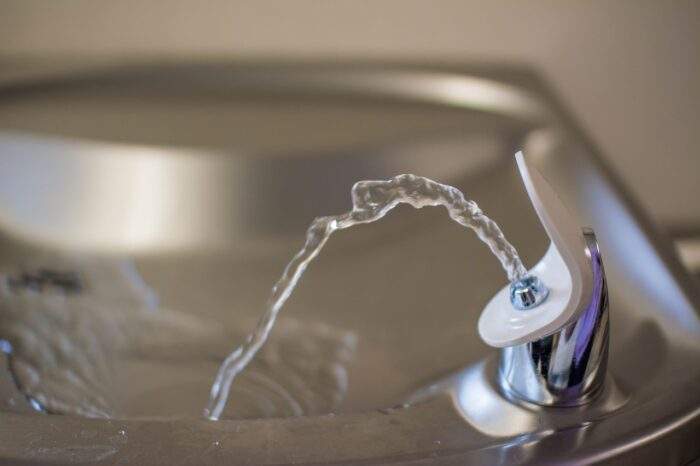The Risks and Preparedness for Commercial Water Damage Restoration
Key Takeaways:

- Commercial water damage can have substantial short-term and long-term effects on businesses.
- Preventive measures and quick response are essential in mitigating the impact of water damage.
- Understanding the process of professional water damage restoration can lead to more informed decisions.
- Incorporating new technologies and innovations can significantly improve outcomes in water damage restoration.
Table of Contents:
- Introduction to Commercial Water Damage
- Common Causes of Water Damage in Commercial Buildings
- Preventing Water Damage: Proactive Measures for Businesses
- Steps to Take Immediately After Water Damage Occurs
- The Process of Professional Water Damage Restoration
- Technologies and Innovations in Water Damage Restoration
- Conclusion: The Value of Being Informed and Ready
Introduction to Commercial Water Damage
Businesses are often vulnerable to various disruptions, but few are as immediately damaging and potentially long-lasting as the impact of water damage. The importance of a rapid and informed response to water intrusions cannot be understated, as delays can substantially exacerbate the damage’s severity. When water invades a commercial space, actions must be taken to prevent the compounding effects, such as mold, structural decay, and other related hazards.
Understanding the different facets of water damage and its consequences is the first step in creating a thorough defense strategy. Primary concerns involve the immediate loss of property and potential halts in business operations, which can lead to significant financial deficits. In these situations, the value of a reliable commercial water damage restoration Knoxville, TN, becomes apparent, offering solutions to return business operations to normal quickly.
Common Causes of Water Damage in Commercial Buildings
The complexity of commercial building structures and operations means that water damage can originate from many sources. Plumbing systems often extend throughout large commercial spaces and are susceptible to failures such as burst pipes or overflowing fixtures. Weather-related incidents, including violent storms or floods, pose significant threats, highlighting the need for comprehensive weather preparedness strategies. Structural issues are another culprit, with deteriorating roofs or foundation cracks allowing water to seep into the building, causing damage that compounds over time if unnoticed or unaddressed.
Preventing Water Damage: Proactive Measures for Businesses
When it comes to water damage, prevention is always better than therapy. Regular audits of a facility’s infrastructure can identify vulnerabilities that may lead to water damage if left unchecked. Installing proactive defenses, such as flood defense systems recognized by the Environmental Protection Agency, can safeguard against unexpected water intrusions. Employee training should also be a focal point, ensuring staff members are equipped with the knowledge to take immediate steps toward mitigating damage should an incident inevitably occur.
Actions to Take Right Away in the Event of Water Damage
When confronted with water damage, the initial step is to secure the area to prevent potential injuries. Notifying a professional restoration service must be a priority, as these experts are trained to handle water damage swiftly and efficiently. Additionally, thorough documentation of all damage is essential for insurance purposes. Photographs and detailed notes can help ensure that all losses are accounted for during the claims process, aiding in recovering expenses dedicated to repairs and restoration.
The Process of Professional Water Damage Restoration
The restoration process commences with a detailed evaluation by seasoned professionals who determine the magnitude of damage and develop a tailored action plan. Water extraction is the first line of action, utilizing industrial-grade pumps and vacuums. Following the extraction, drying, and dehumidification are paramount to thwart the proliferation of mold and further damage. Only once the area has been thoroughly dried can the repairs and restoration begin, including anything from minor to significant reconstructions.
Technologies and Innovations in Water Damage Restoration
The water damage restoration field is continuously evolving, with new technologies enhancing the efficiency and effectiveness of recovery processes. Modern drying systems and dehumidifiers have dramatically improved the speed at which businesses can return to regular operations. Moisture detection technologies are integral to successfully identifying water that may not be visible to the naked eye, thus addressing potential problems before they escalate. Noteworthy innovations include climate-resilient flood barriers, which protect against extreme weather events and flooding.
Conclusion: The Value of Being Informed and Ready
The stakes are high when it comes to commercial water damage, with potential repercussions extending beyond the immediate physical damage to the very viability of the business. Hence, understanding the nature of water damage, equipping oneself with prevention strategies, and preparing a response plan are invaluable to any commercial entity. By fostering a culture of readiness and learning from past occurrences, businesses can confront these watery woes with resilience and assurance, minimizing disturbance and promoting a swift return to normalcy.







